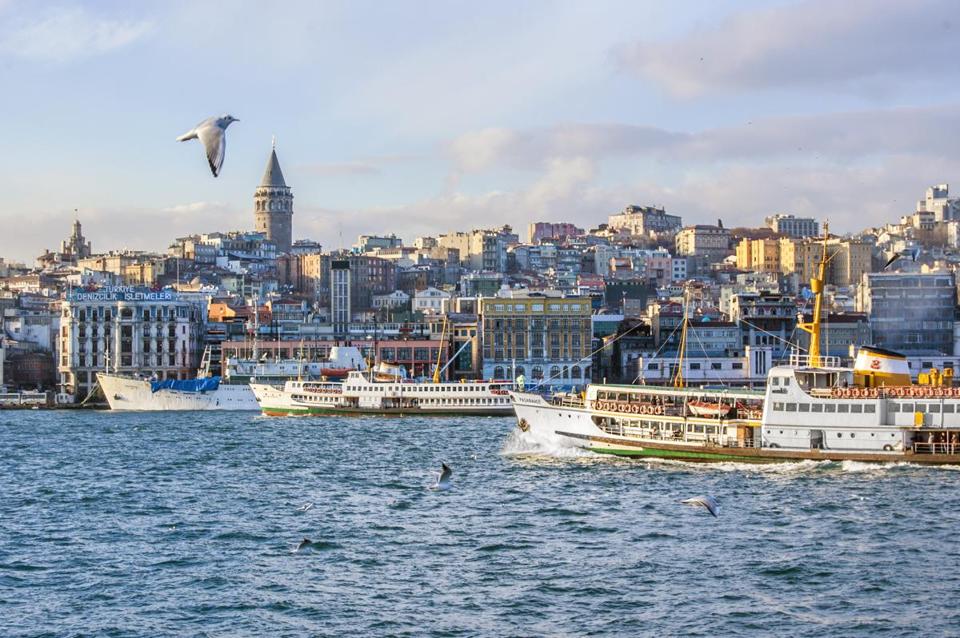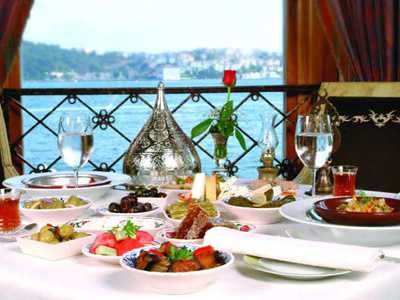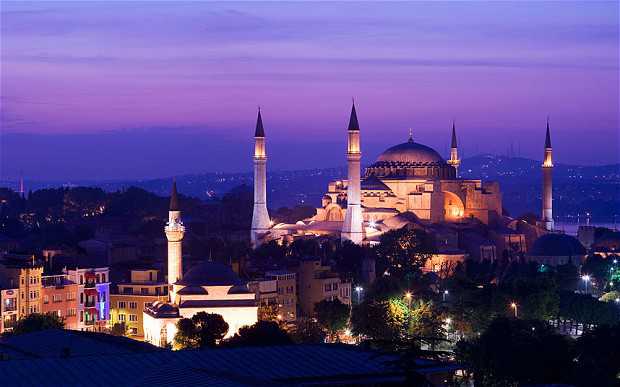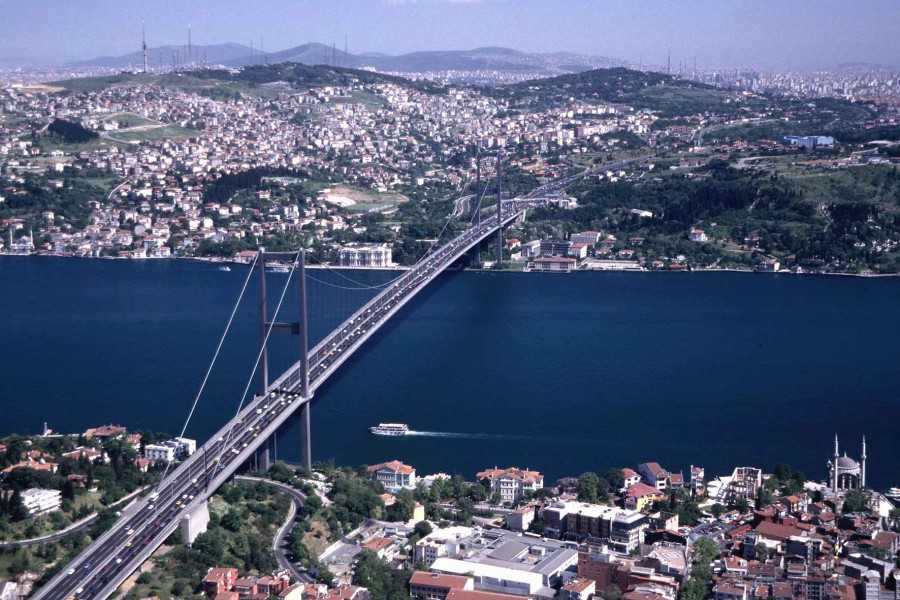NEW YORK, NY (April, 2011) — Because Istanbul is known only as an exotic and historic city, few are aware that it has become a hip, cool destination with incredible designers, sophisticated restaurants and cafes, music festivals with top Turkish and international talent, trendy boutiques and a lively nightlife that attracts cosmopolitan travelers from around the world.
Below are a few suggestions for places to “see and be seen” in Istanbul:
Lunch at Istanbul Modern
Situated in a converted warehouse on the Bosporus, the Istanbul Modern features contemporary art by local artists, a sculpture garden and restaurant. After strolling through the exhibits, be sure to plan lunch on the stylish terrace overlooking the Bosporus, where the view rivals the art and the food is wonderful too.
Get a Bird’s Eye View: Mikla and 360
Mikla, located on the roof of the Marmara Pera Hotel is one of the city’s most elegant dining venues and has unforgettable skyline views. One of the coolest bars in Istanbul, 360 is a rooftop lounge with panoramic views of the city’s skyline from the spire of St. Antoine Church to Topkapi Palace and Sultanahmet. Its central location on Istiklal Street makes it popular with trendsetters in Istanbul, who congregate for sunset cocktails, artfully presented modern Turkish cuisine and the latest dance tunes played by popular DJs.
Istanbul’s newest restaurants, nightspots and cafes
• Nublu Istanbul @ Babylon, an offshoot of Nublu NYC, offers hot music groups and artists, and is owned by internationally acclaimed Turkish jazz artist Ilhan ErÅŸahin.
• Bird Bar & Grill, serves world cuisine inspired by the chef’s travels to France, Italy, New York and elsewhere.
• Up Lounge Bar & Restaurant in the New Tulip City Hotel welcomes customers with a modern Mediterranean and seafood menu prepared by Pelin Görpe, a young chef who cooked in several popular restaurants in the United States.
• Corvus Wine & Bite, owned by the Corvus Vineyards, offers a great spot for a glass of wine and tapas dishes.
• Owned and managed by the 360 Group, Fish is a multi-level venue specializing in unique appetizers and seafood dishes.
Foodie Havens: Contrast of Contemporary and Classic
• Minyon at W Istanbul: The latest venue for Istanbul’s hottest new chef, Emre Capa, Minyon has become one of the stars of the city’s trendy dining and nightlife scene. This contemporary space provides an upbeat entertaining evening of dining on Capa’s “small plates” cuisine, viewing artwork by young Turkish artists and feeling the rhythm of electronic and lounge music. Surprising dishes from around the globe such as mint and lemon risotto, a square ciabatta burger with pear confit, and mastica crème brulee blend with Capa’s special style.
• Asitane’s chef has spent years studying the recipes of the lavish Ottoman era and serves true Ottoman “court” cuisine with over 200 historic dishes. The restaurant’s charming garden provides an oasis of tranquility amidst the energy of downtown Istanbul. It is located beside a hidden treasure, ancient Chora Church with its rare and spectacular frescos of the life of Mary.
Explore a trendy neighborhood – Cihangir
Cihangir is a small bohemian neighborhood where many painters, caricaturists, actors, writers, journalists and foreigners reside and enjoy the bookstores, galleries, and boutiques. The area’s many cafes and bistros provide a venue for lively conversations about theater, film, literature, politics and philosophy. Book a table at the bustling Meyra Café and Restaurant or visit other popular spots including Café Susam, Kahvedan and Smyrna.
Cool Art on the Edge
When Americans think of Istanbul they tend to think of history, the glories of the opulent Ottoman Empire and ancient archaeological sites. In fact, Turkey’s cultural capital also has one of the liveliest contemporary art scenes in the world.
• Opened in 2005 in what had once been Istanbul’s Victorian-era Bristol Hotel, the Pera Museum is a cultural center with permanent and changing exhibits of art and ceramics
• Santral Istanbul, another new contemporary art museum, was created by Istanbul Bilgi University as a project for urban revitalization and encompasses educational programs, outdoor recreation areas, residences for visiting artists and ample space for the creation and display of contemporary works of art
• Misir Apartments, deceptively contained in a restored 19th-century building, are home to some of Istanbul’s most controversial and modern artists whose works are regularly shown in galleries on the premises. Visit the Galerist and Galeri Nev which showcase the work of local artists who have caught the attention of international dealers.
Shopping, Chic and Funky Markets and Boutiques
There may be no better place in the world to shop than Istanbul. Already famous for its Ortaköy Bazaar, the 4000 shops in the 15th century Grand Bazaar and colorful 17th century Spice Market, Istanbul is also home to trendy shopping areas full of designer boutiques, which attract sophisticated visitors from around the world:
• Nisantasi on Istanbul’s European side and BaÄŸdat Caddesi, or Baghdad Avenue, on the Asian side are the “Rodeo Drives” of Istanbul
• The handsomely restored Akaretler row houses in Besiktas are known for their expensive homes, museums, art galleries and exclusive shops
• The little neighborhood Cukurcuma is a favorite among antique experts and artists
• Equally artistic Cihangir, with its hilly streets, small boutiques, vintage shops and cafes might make you think of San Francisco.
For more information on Turkey, call 1-877-FOR-TURKEY or contact the Turkish Culture and Tourist Offices in New York at 212-687-2194 or in Washington, D.C., at 202-612-6800, or Los Angeles at 323-937-8066 and visit their Web sites at www.tourismturkey.org.
About Turkey
Turkey is a modern country with a captivating blend of antiquity and contemporary and of East and West. The cradle of civilization and center of world history today stands as one of the fastest-growing tourism destinations in the world. Turkey was the site of the first human settlement; the seat of the Byzantine, Roman and Ottoman Empires; the birthplace of Homer and the last home of the Virgin Mary, just to name a few. Today Turkey, with its spectacular coastline, majestic mountains, cosmopolitan cities and quaint villages is one of the world’s most fascinating destinations.






